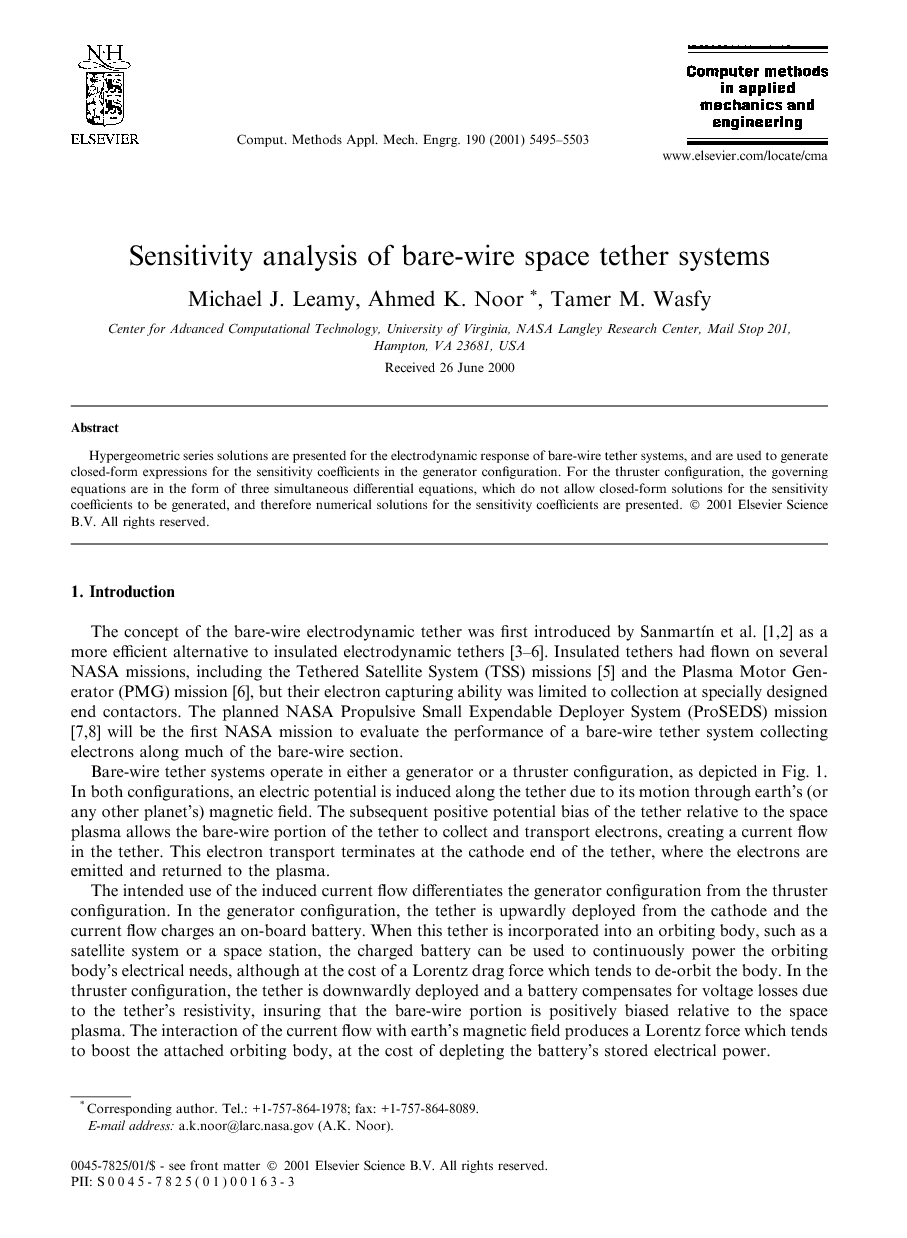ترجمه فارسی عنوان مقاله
تجزیه و تحلیل حساسیت از سیستم های افسار فضایی سیم برهنه
عنوان انگلیسی
Sensitivity analysis of bare-wire space tether systems
| کد مقاله | سال انتشار | تعداد صفحات مقاله انگلیسی |
|---|---|---|
| 25577 | 2001 | 8 صفحه PDF |
منبع

Publisher : Elsevier - Science Direct (الزویر - ساینس دایرکت)
Journal : Computer Methods in Applied Mechanics and Engineering, Volume 190, Issue 42, 3 August 2001, Pages 5495–5503
ترجمه کلمات کلیدی
تجزیه و تحلیل حساسیت - سیستم های افسار فضایی - سیم برهنه -
کلمات کلیدی انگلیسی
Sensitivity analysis ,bare-wire space, tether systems,

